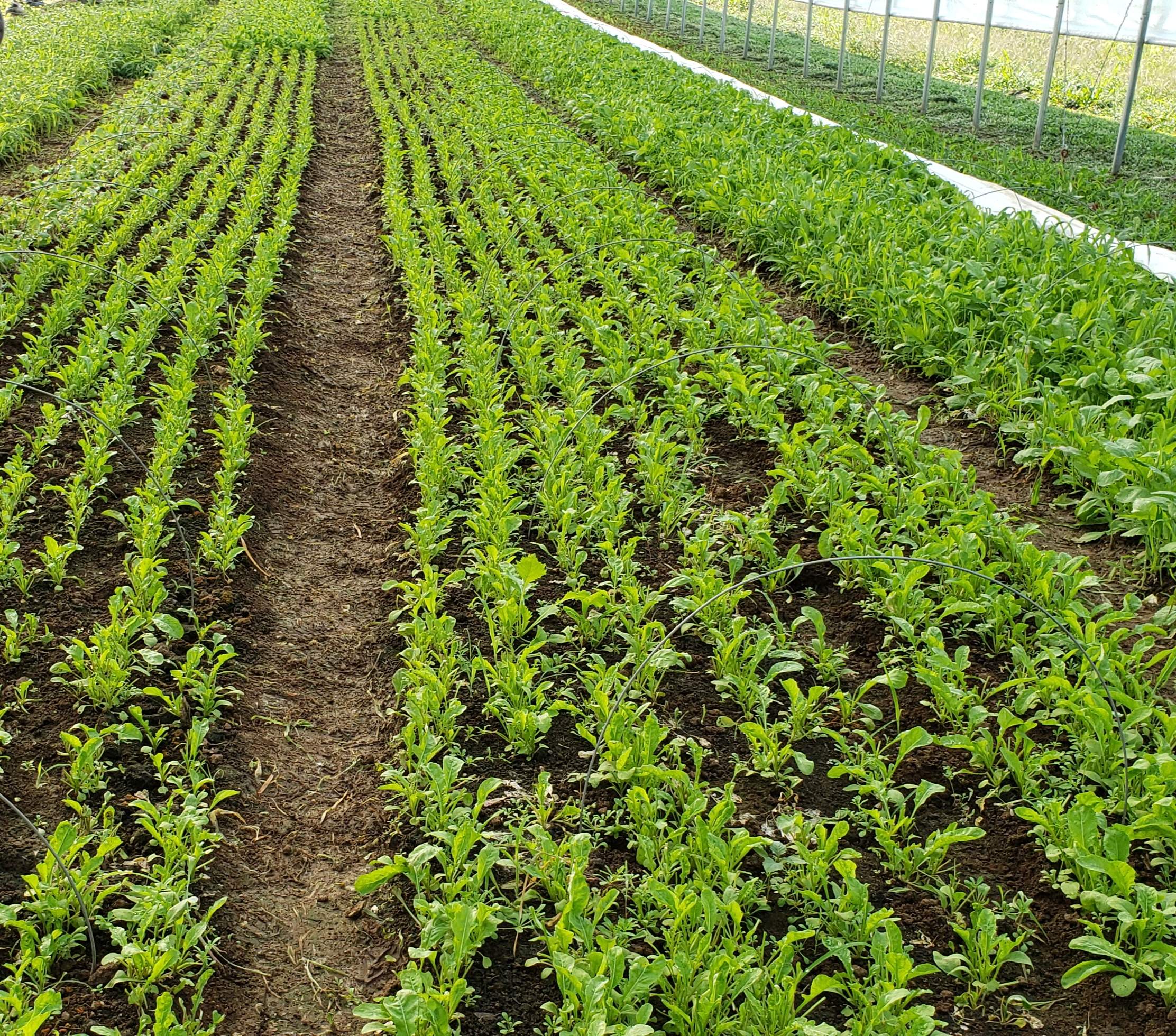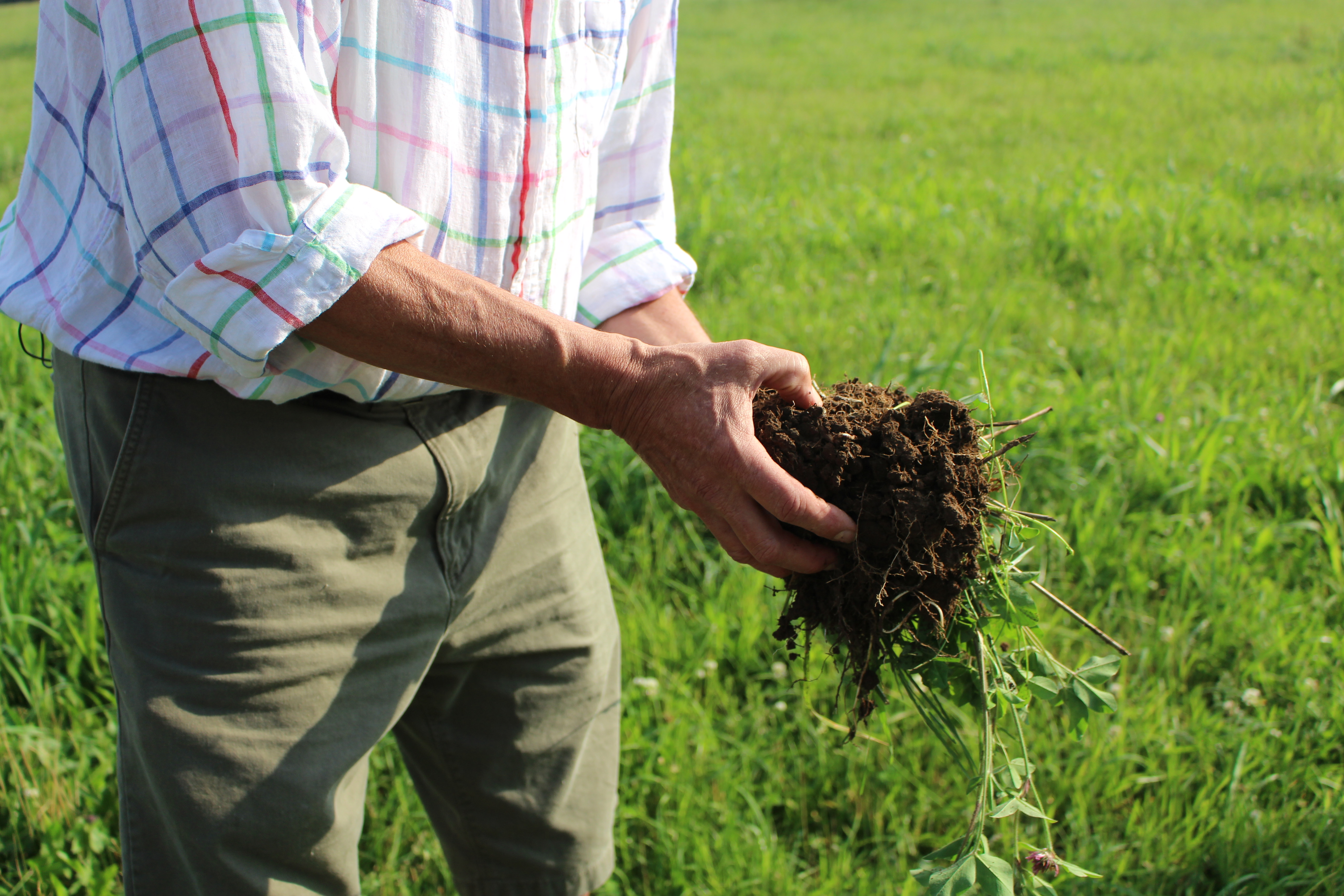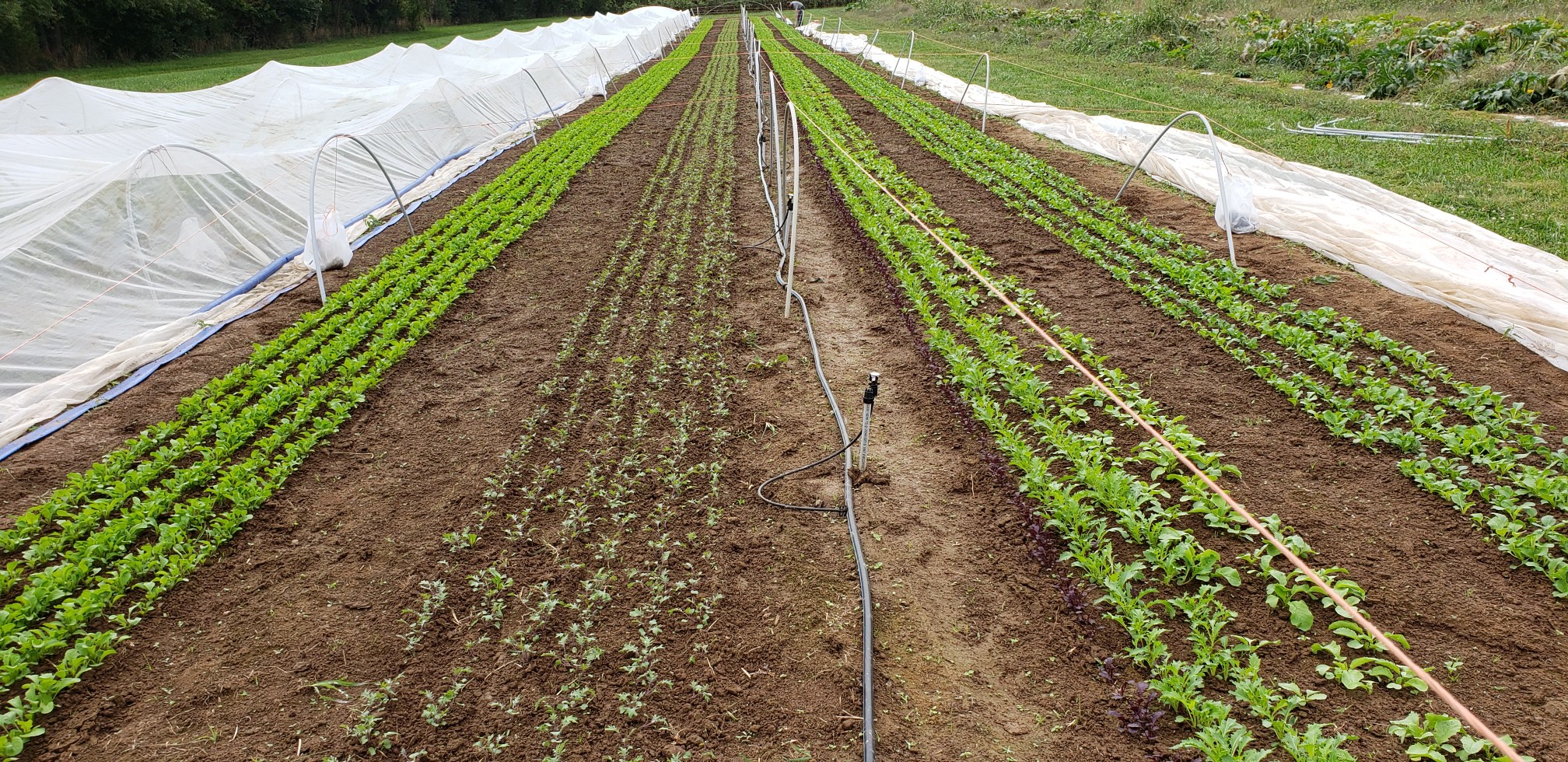
By: Mac Stone, Farmer & Owner, Elmwood Stock Farm
The first of this October’s full moons—there are two—is known as the harvest moon. It’s the full moon closest to the autumnal equinox and casts enough light for gathering up the grains well into the evening. For those of us who grow produce, we take the opportunity to plant perennials and hardy annuals before winter sets in, knowing the seedlings will be established and raring to go next spring. Let’s explore some opportunities you might have to do the same in your home garden.
This year, like none other, is the time to focus on growing more of what you eat, right there in the big city or the suburbs. There’s just enough good weather left to get something established now, if you can move quickly. When you think about it, the summer garden only bears fruit a few short months, whereas a fall-winter-spring garden feeds us most of the year.

When expanding your horizons into the beauty of an edible landscape, start with what you like to eat. A bed of red and green lettuces is a sight to behold. Herbs make for aromatic foundation plantings along walkways to enjoy as you come and go.
Brambles, blackberries and raspberries are great architectural elements in your culinary landscape designs. Use them as a hedge to frame your yard and gardens. Plant blueberry bushes that round out the corners, which eliminates the need for a weed eater. Fruit trees are hard to manage in our humid climate, so save yourself the heartache and shop for local tree fruit instead.
Fruit and vegetable plants need sun, and lots of it—usually the more the better. Steer clear of planting into the shade of big deciduous trees, and take their growth into account. A compound in the root exudate of walnut trees prevents fruiting crops from fruiting, so don’t plant your summer veggie patches near those.
Fall-season crops will get more sun when the leaves fall, which helps. South-facing walls, especially masonry ones, will hold heat, allowing several extra weeks of growth in the fall, and this heat will help plants break dormancy earlier next spring.

Tasks for Your Garden Right Now
We’ve been transitioning summer crops over to fall and winter crops for the past few weeks at Elmwood Stock Farm. The work taking place here is the same as what you can do as a home gardener, though I bet you’ll be working on a smaller scale.
Some basics for what you can do now to plant your fall and winter garden and prep for the spring:
- Pull up spent/dried plant material from this year’s garden.
- Till or turn over garden beds with a shovel to loosen the soil and remove weeds.

- If you have frost blankets (aka floating row cover), sow spinach and lettuces now; there is no later, until next year. If you plant these things in mid-October, you are looking at harvesting in time for Christmas dinner, depending on what the weather does between now and then. Use hoops made from 3- to 4-foot lengths of stiff wire to suspend the blankets off the plants and weights of some kind, like bricks or sandbags, along each edge. Put a note in your calendar to plant these hardy leafy greens in early September 2021 to eat on them all fall.
- If you like garlic, buy organic garlic heads (to be sure no sprout retardant has been applied), break apart the cloves, and plant each 3 to 4 inches apart, then lightly mulch. Each one will only spike out of the ground before winter, then grow and form their own garlic head next May or June. Miss this window = no garlic.
- In areas you want to improve for next year’s garden, sow a cover crop of wheat or rye, mixed with hairy vetch—a legume that will stay green all winter, nourishing the microbes in the soil and protecting them from the wrath of winter weather.

- Use this season’s greatest resource: An alternative to planting a cover crop is to gather up fallen leaves and put a thick layer of them over the beds. Make a pile in the backyard, and get more from the neighbors, and add them to the pile. (Pretty soon, the neighbors will start bringing them to you.) Next spring, this will be considered leaf mold, akin to compost. Use leaves as a mulch around the brambles, berries, trees, herbs … the plants will respond like you fertilized them when actually you inoculated the soil with microbial life, which, in turn, fed the plants for you.
- Get your spring-flowering bulbs in the ground. Triple their diameter to set the depth, and plant them pointy-end up.
- If your garden is in the middle of the yard, run a garden hose from the spigot (not hooked up, obviously) over to the garden. Over the course of the winter and next spring, the grass will engulf the hose, making it invisible and easy to mow over without damaging it.

- If there’s any little spot you might want to plant something next year, go ahead and till and mulch the spot now. You will be glad you did come spring. Plan to train cucumbers, peas and some beans up fences. You might even erect stretches of fence to nowhere, just for trellising. I suggest you plant rainbow Swiss chard right by the front door next spring and shine a light on it. Nothing is more beautiful.
Good Foods Co-op has long been a source of plants, seedlings and fertilizer each spring. Start there for your home-garden supplies, and check out some of our farm’s favorite sources: Johnny’s Select Seeds, High Mowing Seeds, Farmtek and Arbico Organics. When the pandemic settled upon us last spring, seeds and supplies went into short supply in a hurry, so lay in your supply as soon as the catalogs show up this winter.

Some of you may wonder, why is a local farmer prompting us to grow our own food? When you grow more food for yourself, you will pay more attention to weather patterns, recognize plant health and relationship with pestilence, begin to recognize beneficial insects, get more exercise and gain a taste for truly vine-ripened produce. Then when you run out of something, you will contact a local farmer or go to the Co-op to get the freshness and flavor you have come to love and appreciate.
—Mac Stone, Elmwood Stock Farm
